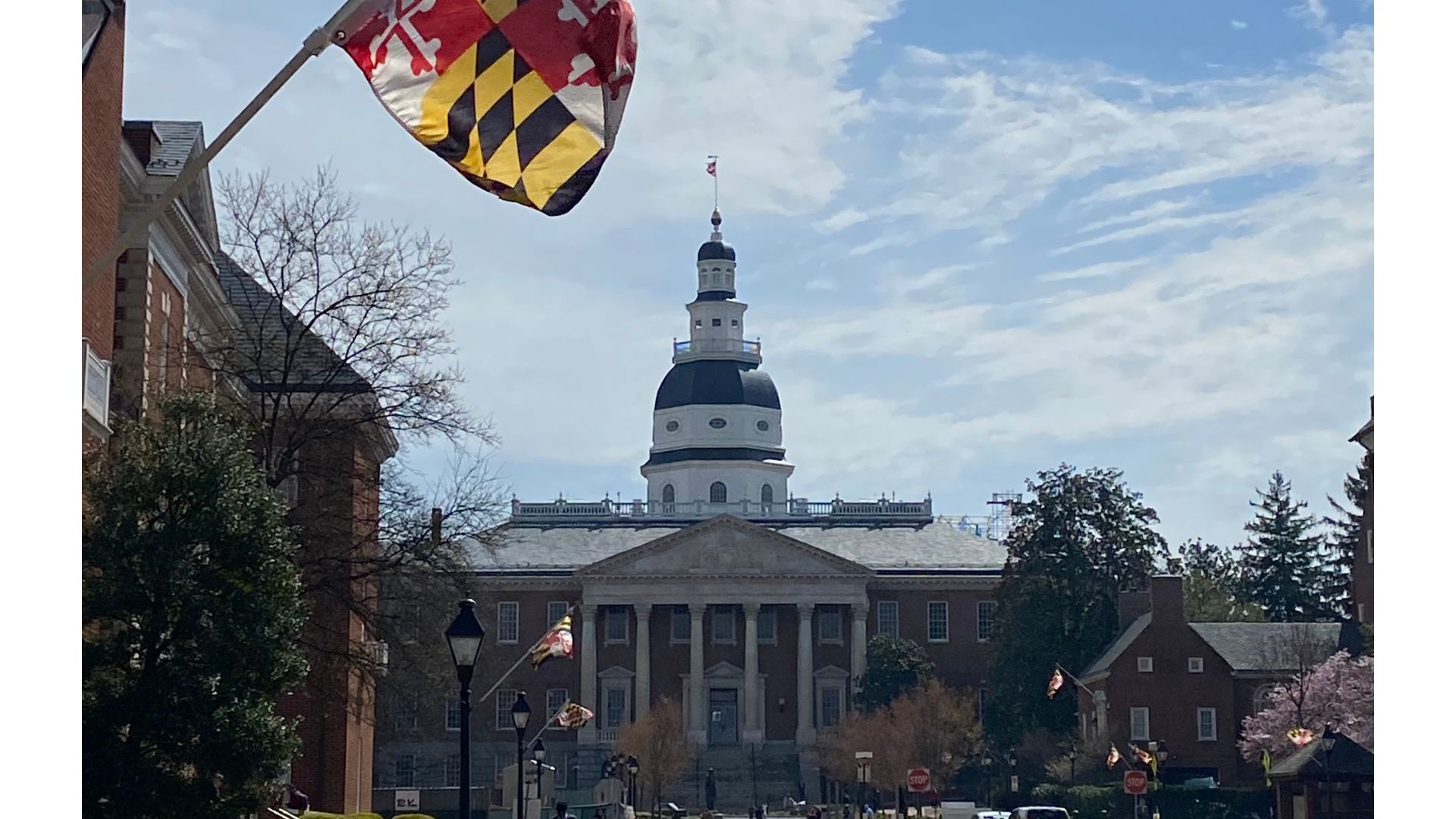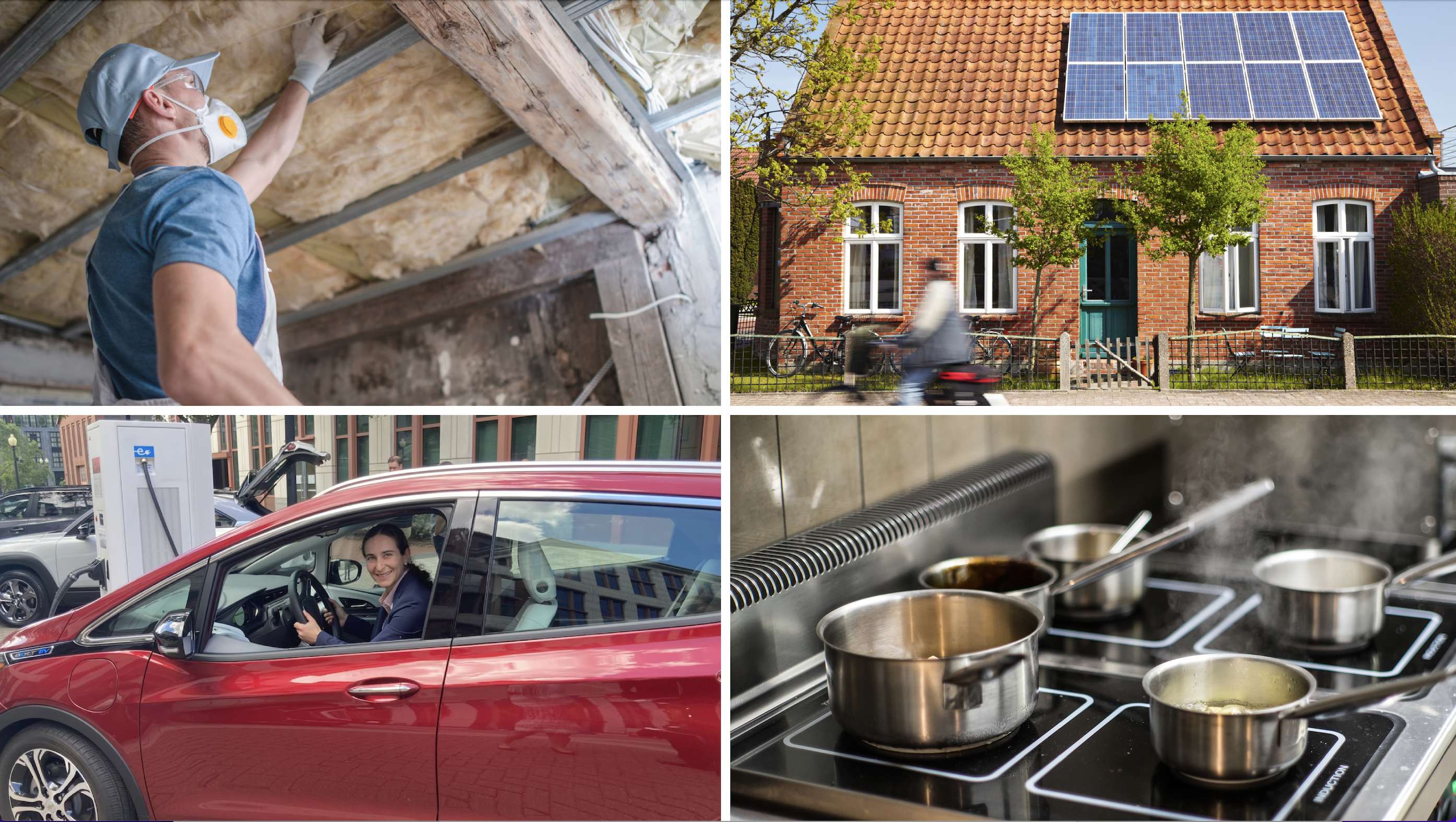
Powering Maryland’s Future
How Clean Energy Outperforms Nuclear Power in Delivering a Reliable, Safe, and Affordable Supply of Electricity
Marylanders count on a safe, secure and reliable supply of electricity, available at a reasonable cost. Yet, the future of our electricity system is in doubt.
Downloads
Maryland PIRG Foundation
Marylanders count on a safe, secure and reliable supply of electricity, available at a reasonable cost. Yet, the future of our electricity system is in doubt. Deregulation has stung Marylanders with skyrocketing electricity rates. The Maryland Public Service Commission has warned of rolling blackouts by 2011 if we don’t take action to curb power demand or increase supply. And Maryland, like other states, faces the urgent need to reduce its contribution to global warming.
Two paths have been proposed that have the potential to address these challenges. Constellation Energy plans to build a third nuclear reactor at Calvert Cliffs, which the company says could provide a large amount of electricity with little global warming or health-threatening pollution, at less cost than natural gas. Others advocate that Maryland follow a “clean energy” path that uses improvements in energy efficiency and new sources of renewable energy to address the state’s electricity challenges.
A comparison of the two pathways shows that by any measure—reliability, cost, safety, environmental impact, or support for a growing Maryland economy—clean energy is likely to outperform a nuclear-based strategy for powering Maryland’s future.
Maryland has already begun to adopt clean energy strategies that will make a large difference in addressing the state’s future electricity needs.
- In spring 2008, lawmakers created or expanded a series of clean energy programs, including the EmPOWER Maryland energy efficiency initiative. These programs will reduce the need for new power plants by reducing demand for electricity, while also creating renewable energy facilities such as rooftop solar panels. These steps should ensure the reliability of the electricity system through 2025. Additionally, by 2015, these programs will yield as much energy per year as 1.4 new reactors at Calvert Cliffs.
- However, these efforts will tap just a portion of Maryland’s clean energy resources. Additional efficiency and load management could reduce peak electricity demand by as much as 8,500 MW below business-as-usual levels by 2025, ensuring the reliability of Maryland’s electricity system for the foreseeable future. Coupled with additional renewable resources—including wind, solar and biomass power—these resources could help enable the state to retire aging power plants. Clean energy resources can deliver a more reliable and efficient supply of electricity for Maryland than the expansion of Calvert Cliffs.
- Nuclear reactors are complex and take a long time to build, while clean energy technologies are quick to deploy. A new reactor at Calvert Cliffs would not be complete until December 2015 at the very earliest, making a nuclear-based strategy ineffective in meeting the state’s near-term challenges. By contrast, energy efficiency and many renewable energy technologies can be implemented quickly, making a significant and rapid contribution to the state’s energy needs.
- Clean energy technologies tend to be small and distributed throughout the state in many small units of capacity. While some clean energy sources, such as solar and wind power, generate electricity intermittently, it is unlikely that every unit will fail at the same time. As a result, thoughtful integration of clean energy technologies can provide stable, reliable power to Maryland.
While many nuclear reactors also provide stable power, the unplanned shutdown of a nuclear reactor can cause massive disruption to the electric grid. For example, when a power line failure triggered the shutdown of two reactors at Turkey Point in southern Florida in February 2008, more than 3 million customers in the Miami area lost power for up to 5 hours—causing traffic jams, stranding people in elevators, and widely disrupting business. And after the massive northeast blackout in August 2003, nearly two weeks passed before nine affected nuclear reactors were able to return to full power, keeping the grid on the brink of another failure.
• The existing reactors at Calvert Cliffs have suffered from a number of unplanned shutdowns that harmed the reliability of the electricity system. For example, mechanical problems and management failures led to the shutdown of both reactors in May1989.
The outage created a regional electricity shortage and forced Baltimore Gas & Electric to spend more than $450 million to purchase replacement power—most of which was directly passed on to consumers.
Clean energy can deliver a safer and more secure supply of electricity for Maryland compared to expanding Calvert Cliffs.
- A new nuclear reactor at Calvert Cliffs would produce relatively little global warming and health-damaging air pollution, but during its lifetime it would produce about 1,380 tons of highly radioactive spent fuel. This waste remains dangerous for thousands of years, and no nation on earth has developed an acceptable solution for safely disposing of it. Constellation currently stores used fuel on-site at Calvert Cliffs in a cooling pond and in dry storage casks. An accident or direct attack involving spent fuel storage sites could release dangerous radioactive material into the air.
- Energy efficiency, renewable energy and combined heat and power facilities do not produce any radioactive waste, while also producing little air pollution that contributes to global warming and immediate health impacts. Clean energy can provide electricity for Marlyand consumers at a more reasonable cost than a new nuclear reactor at Calvert Cliffs.
- Recent estimates have placed the lifetime average cost of nuclear power in the range of 12 to 15 cents per kWh—with some as high as 22 cents per kWh (including interconnection and firming costs, but not distribution). In comparison, commercial energy efficiency measures in Maryland are available at an average cost of 2 cents per kWh. Residential efficiency measures cost an average of 3.9 cents per kWh. Industrial combined heat and power can deliver power in Maryland for about 4.5 cents per kWh. And recently signed contracts for wind power in the Mid-Atlantic have come in just above 8 cents per kWh for on-shore facilities and 11.7 cents per kWh for a wind farm to be constructed off the coast of Delaware.
- Since 2005, estimates for the cost of building a new nuclear reactor have skyrocketed, climbing more than twice as fast as other types of generation technologies. Bottlenecks are developing as demand for reactor parts is far exceeding supply. For example, only two metal foundries in the world, one in Japan and one in France, are capable of manufacturing nuclear reactor vessels.
- In mid-2005, Constellation estimated that expanding Calvert Cliffs would have a capital cost of $2.5 to $3 billion. However, in a July 2007 report to the Nuclear Regulatory Commission, Constellation suggested that expanding Calvert Cliffs would have a capital cost of about $6.9 billion. And industry cost estimates to date in 2008 have been more than 50 percent higher still.
- Nuclear reactors can only become financially viable by transferring risk to taxpayers and/or customers. The long-term value of federal taxpayer subsidies for a new reactor at Calvert Cliffs could exceed $13 billion if it is one of the first new plants built in the United States.
In addition, taxpayers could be on the hook for up to 98 percent of the damages caused by a worst-case accident at a nuclear facility under a nuclear industry liability cap created by Congress. Clean energy can create more jobs and expand the localeconomy more than building a new nuclear reactor at Calvert Cliffs.
- The American Council for an Energy-Efficient Economy (ACEEE) calculates that if Maryland tapped into its energy efficiency potential with six energy efficiency policies and an advanced load management program, residents would save about $10 a month on electricity by 2015. These policies would return $4 in energy bill savings for every dollar invested.
- ACEEE estimates that this efficient course could create more than 12,000 new jobs in Maryland by 2025, increase net wages paid by $780 million, and grow gross state product by more than $700 million. While no comparable macroeconomic analysis exists for a new reactor at Calvert Cliffs, Constellation reports that it would add 360 full-time jobs to Calvert County.
Powering Maryland’s future with clean energy makes more sense than buildng a new reactor at Calvert Cliffs. Accordingly:
- The state should prioritize successful implementation of the EmPOWER Maryland energy efficiency program and the state’s renewable electricity standard. Furthermore, the state should expand the goals of EmPOWER Maryland beyond 2015, expand demand-management programs to capture more of the state’s available load-shifting potential, and encourage the development of combined heat and power facilities.
- The Maryland Public Service Commission should deny a certificate of public convenience and necessity for the proposed reactor at Calvert Cliffs, on the grounds that clean energy measures already underway would provide a more stable and reliable electric system and superior economic benefits for the state.
- The state should not offer any subsidies to support building a new nuclear reactor, whether in the form of tax breaks or other approaches that transfer the risk of building a new nuclear reactor onto Maryland citizens.
- To ensure the safety and security of Maryland’s energy supply, state leaders should enact a conditional ban on the construction of any new nuclear power plants until a satisfactory national solution for storage of high-level radioactive waste is developed.
- The federal government should redirect subsidies currently on offer to the nuclear industry toward more effective clean energy solutions. An equivalent investment in these technologies can prevent the emission much larger amounts of global warming and health-threatening pollution.
Topics
Find Out More


2024 Legislative Agenda and Priorities

Clean Energy Home Toolkit

